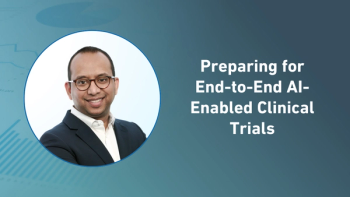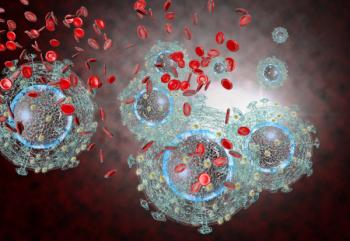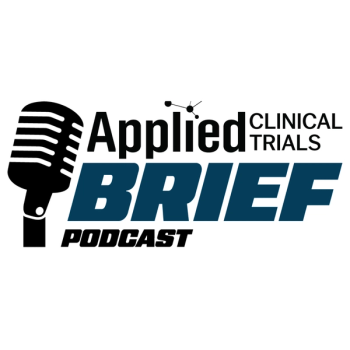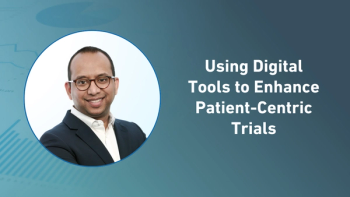- Applied Clinical Trials-10-01-2025
- Volume 34
- Issue 4
Do Phase II Protocol Learnings Help Simplify Phase III Protocol Designs?
An analysis of primary Phase II protocols paired with their Phase III pivotal trials spotlights the need to balance scientific curiosity with participant and site burden.
Sponsor companies have long been aware of the high and increasing levels of protocol design complexity and their adverse impact on clinical trial enrollment and timelines. During the past two decades, numerous ideas and strategies have been implemented with the hopes of improving protocol design complexity, including restricting the number of procedures based on study budget targets; removing procedures tied to tertiary and exploratory endpoints; and modifying procedures and visits based on participant and site input.
One area that has not been empirically examined: leveraging Phase II protocol experience to inform the design of its Phase III counterpart. Some have speculated that Phase II experience with protocol deviations, amendments, and enrollment performance would offer valuable insights leading to simplified designs that address errors and inconsistencies and contribute to improvements in site execution challenges, participant access, and burden.
Tufts CSDD recently looked at Phase III clinical trial protocols paired with their primary Phase II protocol, hoping to see if some learning is taking place that is translating into downstream simplification of the more costly, later-stage protocol.
The opposite appears to be happening.
In nearly all cases, the Phase III protocol had a higher number of endpoints, procedures, and eligibility criteria relative to their Phase II counterparts. And the magnitude of the increases was significantly higher in non-oncology studies and in those sponsored by major pharma.
Drug development professionals cannot help but gather more data and insights despite growing evidence that site and participant burden is considerable and clinical trial speed and cost are worsening under the weight of protocol complexity.
Pairing Phase II and III protocols
Pairing primary Phase II protocols with their Phase III pivotal trials was a very labor-intensive activity. Tufts CSDD compiled data from multiple sources—including ClinicalTrials.gov, FDA data, and the peer-reviewed literature. Primary Phase II trials and their corresponding Phase III pivotal trials were identified based on national clinical trials number, drug name, and accompanying drug information.
Start dates for each recently completed pivotal Phase III trial were checked to confirm that the Phase II clinical trial logically preceded its corresponding later-stage pair.
Data collected on each drug included name, phase, indication, sponsor company size, study start date, and primary completion date. For this analysis, Tufts CSDD also collected the number of inclusion and exclusion criteria and the number of total, primary, secondary, and exploratory objectives and endpoints for each Phase II and Phase III study.
In total, more than 1,000 protocols were screened, resulting in 69 pairings of primary Phase II protocols with their Phase III pivotal trial counterpart.
Almost always more complex
In nearly all instances (>97%), the Phase III pivotal trial protocol had a higher number of endpoints, objectives, and eligibility criteria. Compared to their primary Phase II protocol, 1.3 objectives, 4.9 endpoints, and 4.0 inclusion/exclusion criteria, on average, were added to the corresponding Phase III protocol.
Phase III pivotal trials in non-oncology showed an increase of 5.9 endpoints over their Phase II counterparts; in oncology, an average of 4.1 endpoints were added to the Phase III protocol. Phase III oncology protocols, however, showed a higher increase in the number of eligibility criteria (4.7) over their earlier Phase II protocol compared to non-oncology protocols (2.9).
Following experience with the primary Phase II protocol, larger sponsor companies tended to increase the number of endpoints and eligibility criteria more extensively than did their smaller pharma peers. Larger sponsors added 7.5 endpoints, on average, to the Phase III pivotal protocol, nearly 4x the average number of endpoints (1.9) that smaller sponsors added. Larger sponsors added an average of five eligibility criteria, compared to 3.5, on average, that smaller companies added.
An insatiable appetite
Based on conversations with a number of industry insiders, several key factors help explain these findings: protocol design habits, risk aversion, and commercialization pressures.
Clinical scientists and protocol authors often begin writing the later-stage protocol using the previous protocol as a template or guide. They may not always remove unnecessary items or apply learnings from the earlier phase study.
The protocol review process, particularly within large pharmaceutical companies, gathers input from a large number of internal and external stakeholders—including senior leadership; clinical, legal, clinical operations, data management, regulatory, commercial, and medical affairs; subject matter experts; and patient advocacy groups. This process facilitates protocol inflation, where later-stage protocol designs add more endpoints, procedures, and eligibility criteria to ensure that all stakeholder needs, concerns, and curiosities are addressed.
Although Phase II trials are typically “hypothesis generating” and Phase III studies are more “confirmatory” in nature, there are too many hypotheses that clinical teams want to continue to explore and confirm in their later-stage trial activity. The higher target enrollments in Phase III also permit sponsor companies to better power biomarker, exploratory, and future-use research activity. In the recent Tufts CSDD analysis, sponsors increased the number of exploratory endpoints in the corresponding Phase III protocol more so than any other endpoint category.
Phase III pivotal trials are often multinational, requiring harmonization across geographic regions. As such, sponsor companies may add endpoints to meet regional regulatory or reimbursement requirements.
One colleague offered that many pharmaceutical companies are now conducting larger but fewer Phase III studies where several medical or scientific questions have been combined into a single protocol instead of multiple smaller-in-scope protocols. Through this approach, sponsors hope to submit their development programs to regulatory agencies sooner.
Industry insiders expect that risk aversion is playing a role in the run-up of complexity in the later-stage protocols. Larger and more complex Phase III trials, for example, allow sponsors to hedge against failure by including more endpoints. This is particularly true in non-oncology areas where therapeutic effects may be more subtle and more difficult to detect. And as Phase III pivotal trials are essential to regulatory approval, sponsors may include more endpoints and procedures in anticipation of regulatory agency requests.
Lastly, sponsors increase the scope of their Phase III protocol designs to support label expansion and market differentiation to demonstrate broader benefits. More endpoints can also assist with health economics and outcomes research, which are essential for payer negotiations and formulary placement.
Shift in mindset and practice
Albert Einstein once remarked that a “curious mind receiving new information and ideas never returns to its former size.’” Curiosity lies at the heart of—and is a critical success factor supporting—innovation in drug development. The more information and data that we collect, the more that we crave. Participant and site engagement, however, are also widely recognized as critical success factors supporting innovation in drug development.
Insights from this recent Tufts CSDD analysis shine a light on the need to balance scientific curiosity with participant and investigative site burden. Trade-offs must be discussed and acknowledged early in the protocol planning and design process by all stakeholders, requiring a major shift in mindset and practice.
Ken Getz, MBA, Executive Director and Research Professor, Tufts Center for the Study of Drug Development, Tufts University School of Medicine
Articles in this issue
Newsletter
Stay current in clinical research with Applied Clinical Trials, providing expert insights, regulatory updates, and practical strategies for successful clinical trial design and execution.







.png)



.png)



.png)
.png)
